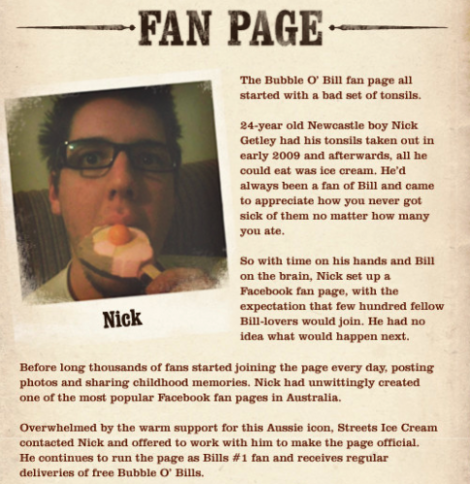As my friends can attest, I’m a big Socceroos fan.

I grew up playing football (aka soccer) and although a few different codes compete for my attention in my home town, the World Game is the one I truly care about.
It was to my great joy, therefore, that the national administrators of the sport comprehensively revamped the local league several years ago. I think it’s fair to say the previous administration was widely perceived as incompetent, so it was no surprise when it was scrapped. The Football Federation of Australia (FFA) was born, and in 2005 the A-League kicked off.
Side note: I wasn’t the only one scratching my head when West Sydney wasn’t a founding club. Maybe it was a sign of things to come.
Around this time I was getting into Facebook. I had become a “fan” of a couple of other sports clubs (eg Wests Tigers) when I noticed there was no Facebook page dedicated to the Australian national football team. So, being the passionate fan that I am, I started one.
In no time I had attracted over 10,000 fans. I dutifully sent out updates for upcoming matches, and I even provided the details of local TV coverage for fans who couldn’t attend in person.
This went along swimmingly until I got a message from Facebook HQ telling me that I had no rights over the page and my administration access was suspended. The message said I could submit an appeal outlining why I should be granted access, which I did on the basis of the page being a “fan” page. I even suggested that the title of the page be changed to “Fans of the Socceroos”. Naturally I staked no claim whatsoever to any IP such as the Socceroos logo.
Lo and behold, Facebook never replied.
What can I deduce from this? Obviously some clever dick in the FFA had the bright idea of jumping on the Facebook bandwagon – and the easiest way to do this was to hijack the fan page that I had lovingly curated.
The irony is I would gladly have handed them the reins if only they had the professionalism to ask.
But they didn’t. Suffice to say it left a bad taste in my mouth.

A different approach
The sorry affair was a faded memory as I watched Grace Gordon from Soap Creative present at last month’s SMCSYD.
Grace was busting social media myths when she mentioned a brand that piqued my interest: Bubble O’ Bill.
For those of you who are not aware, Bubble O’ Bill is an ice cream that was first launched in the US in the 1980s, but achieved peculiar success in Australia soon after.
In 2009, customer Nick Getley liked the brand so much he created a Bubble O’ Bill page on Facebook that – at the time of writing – has 844,276 fans!
Switched On Media tells us how it came about:

It is the penultimate sentence that resonates with me:
Overwhelmed by the warm support for this Aussie icon, Streets Ice Cream contacted Nick and offered to work with him to make the page official.
Take a bow, Streets. You approached social media in the spirit that was intended, and now you are reaping the rewards.
The difference between right and wrong
So what does this have to do with e-learning?
Well, as time goes by, e-learning is increasingly converging with social learning through social media. The two marketing cases outlined above teach us that when we implement a social media strategy, there is a right way and a wrong way.
The right way is to be inclusive, collaborative and supportive. If you empower your champions to follow their passion, they will lead the charge on your behalf.
The wrong way is to be draconian, faceless and isolationist. If you burn your champions, you will lose your allies.
The proof of the pudding
So to conclude, let’s compare fan bases.

The Socceroos, the pride of a nation, has 144,378 fans on Facebook.
Bubble O’ Bill, the ice cream cowboy with a bubblegum nose, has 844,276 fans on Facebook.
Whose social media strategy will you adopt?



